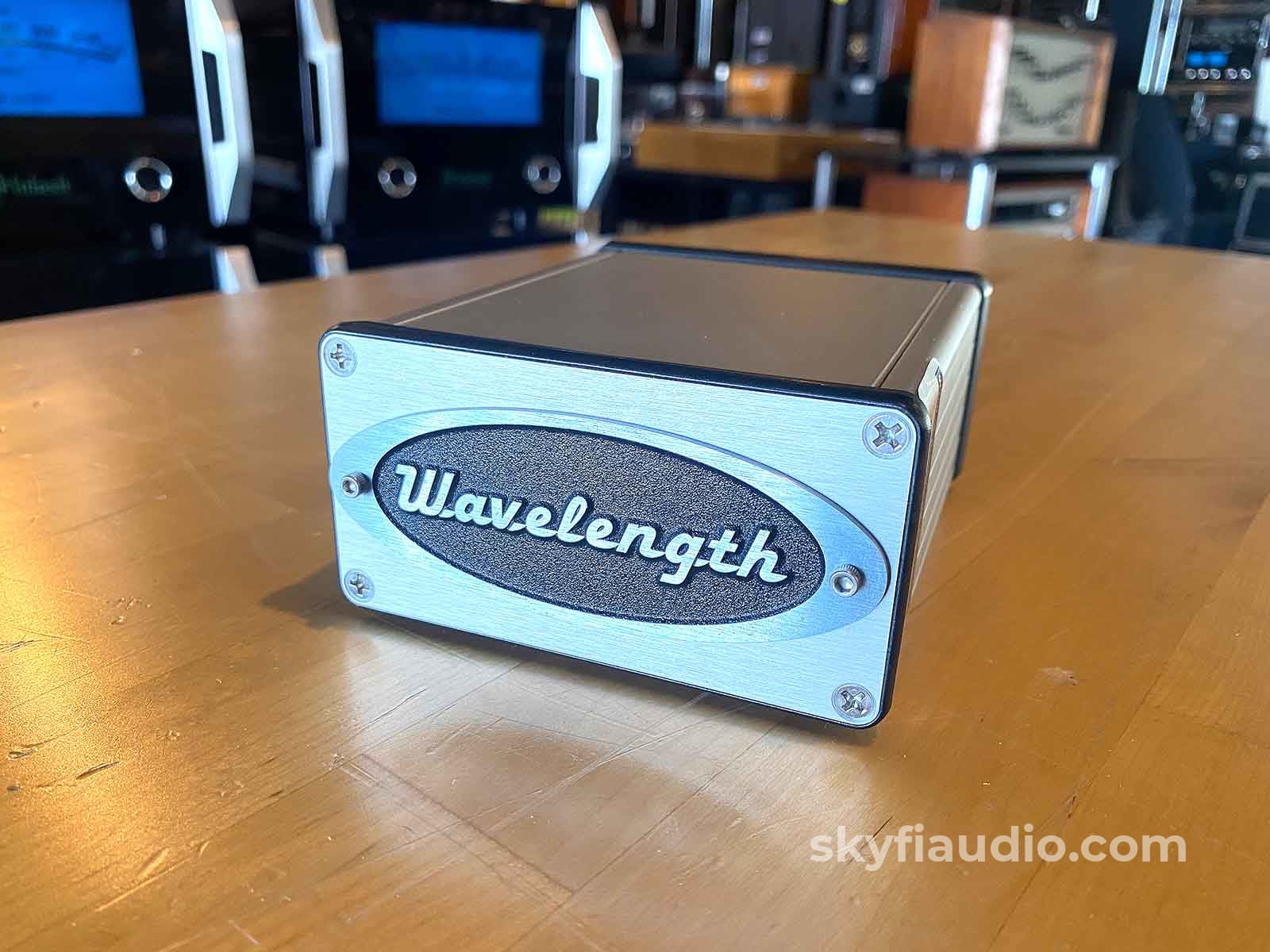

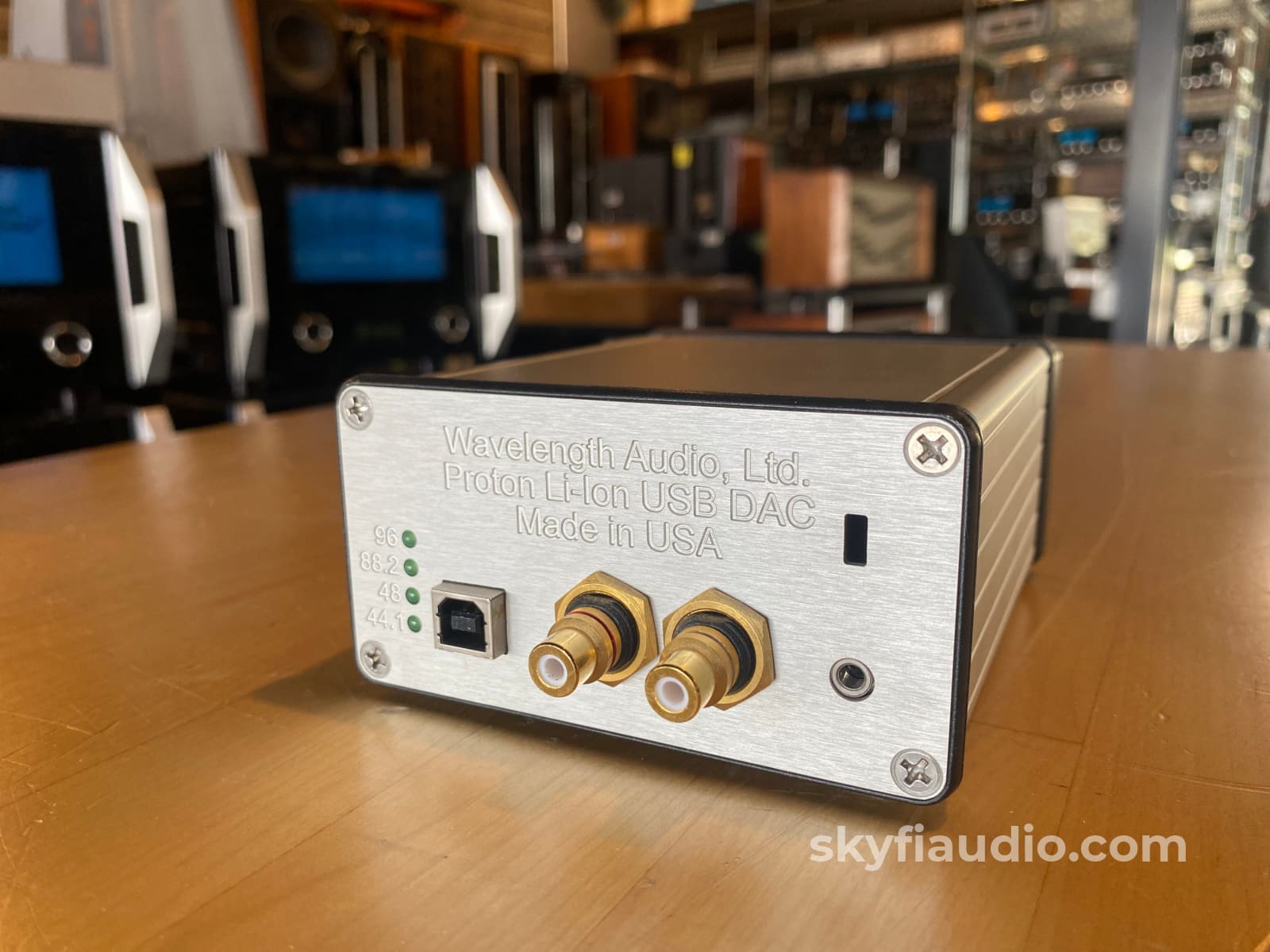
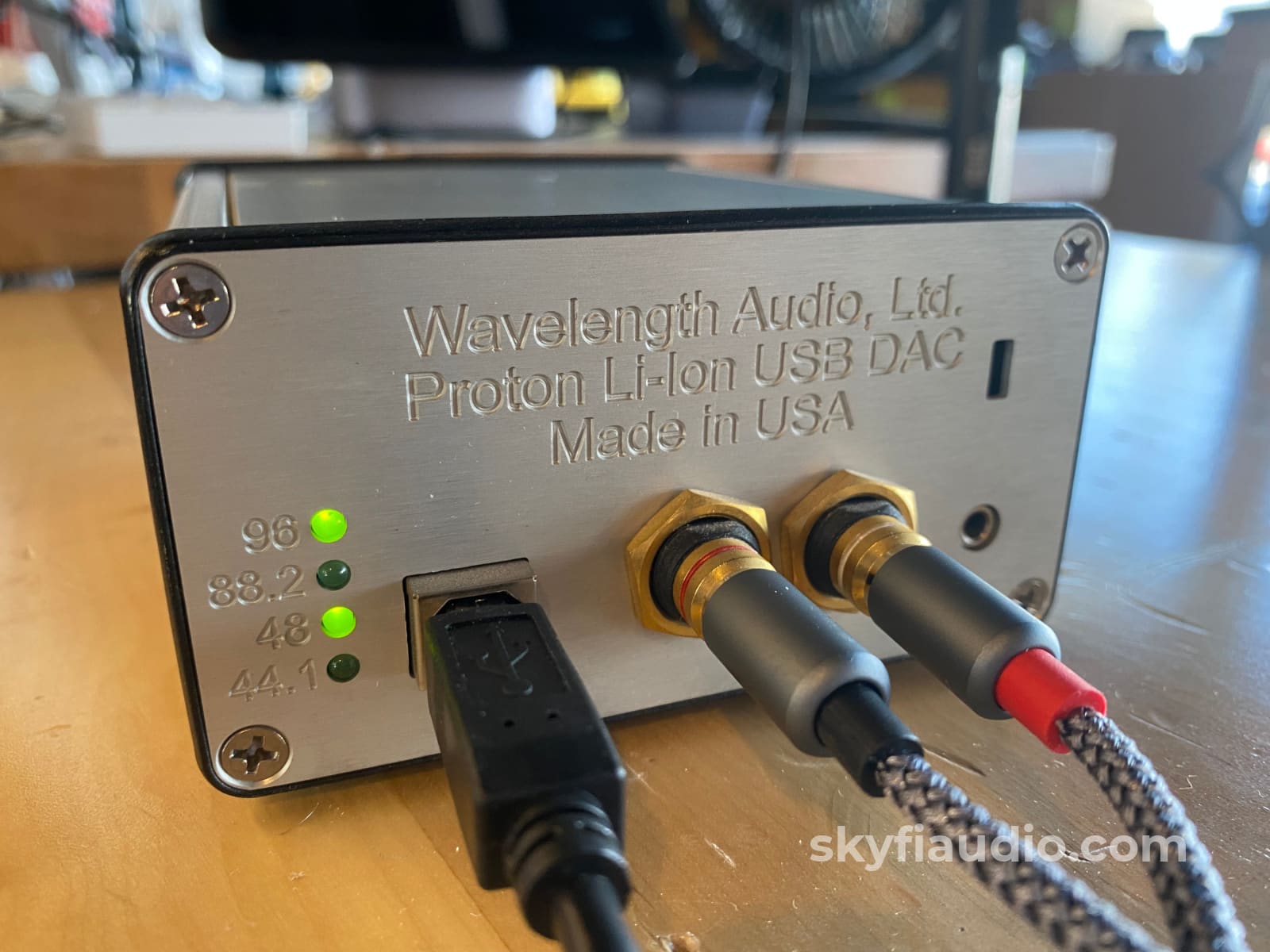
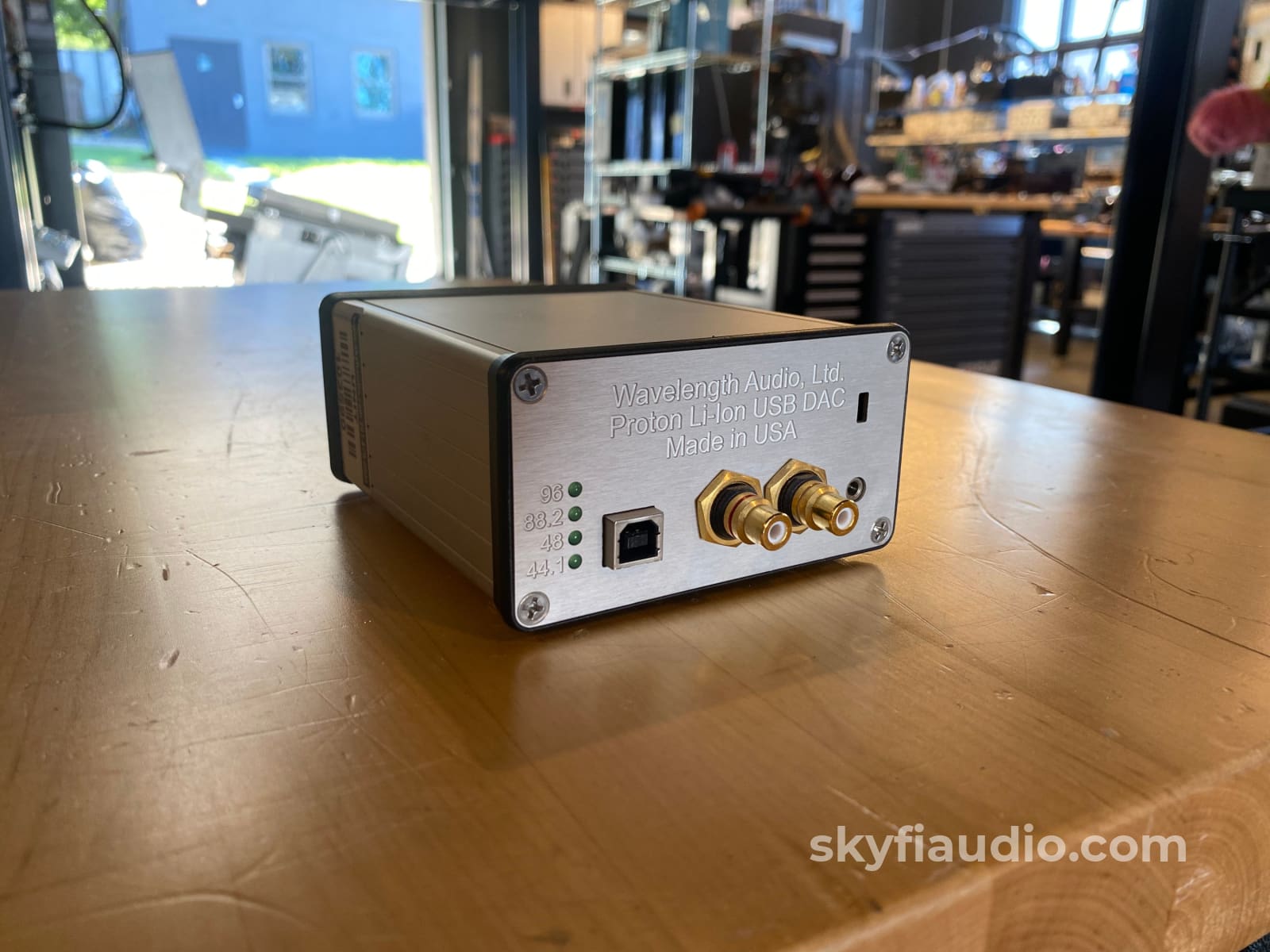
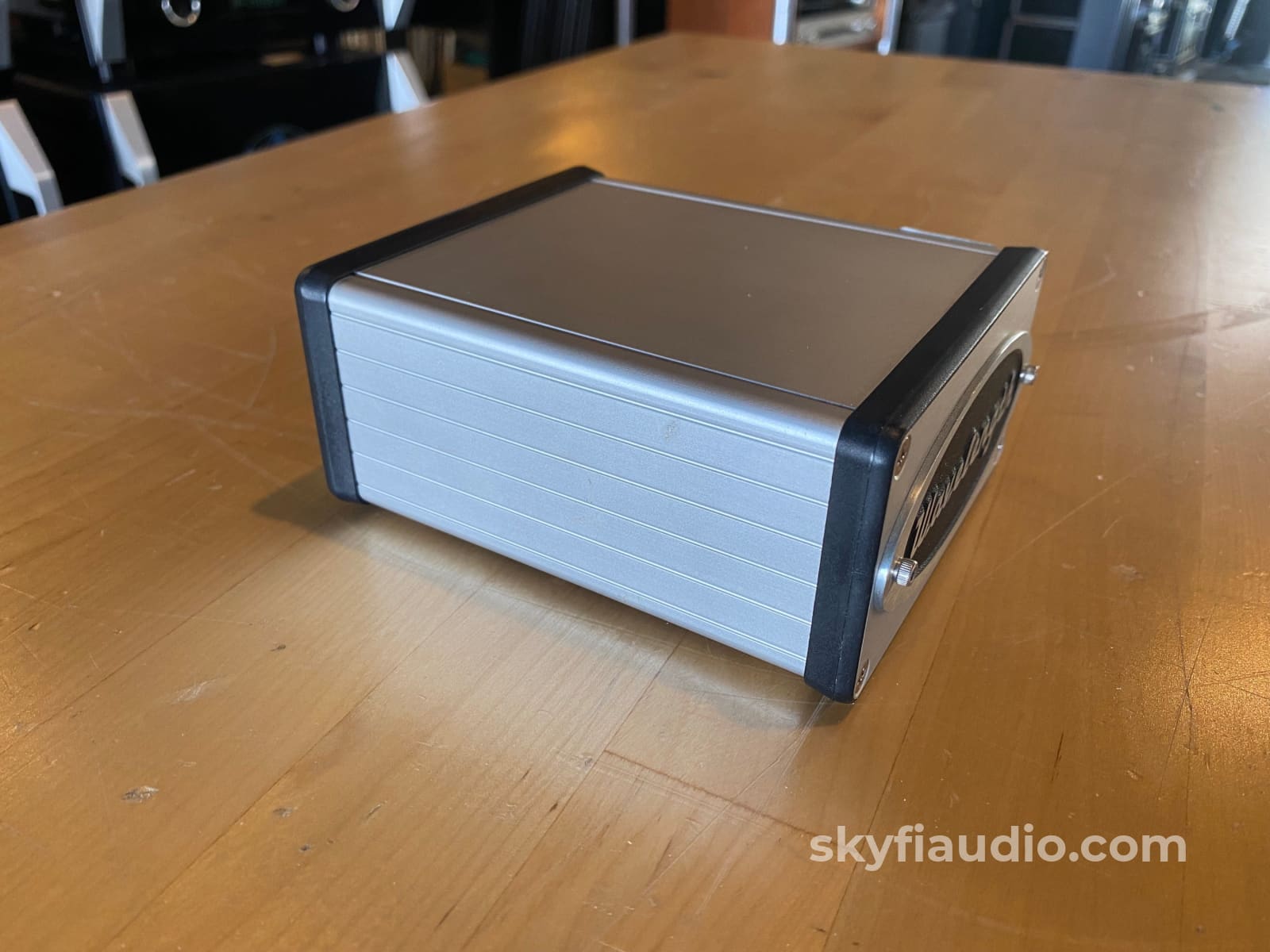
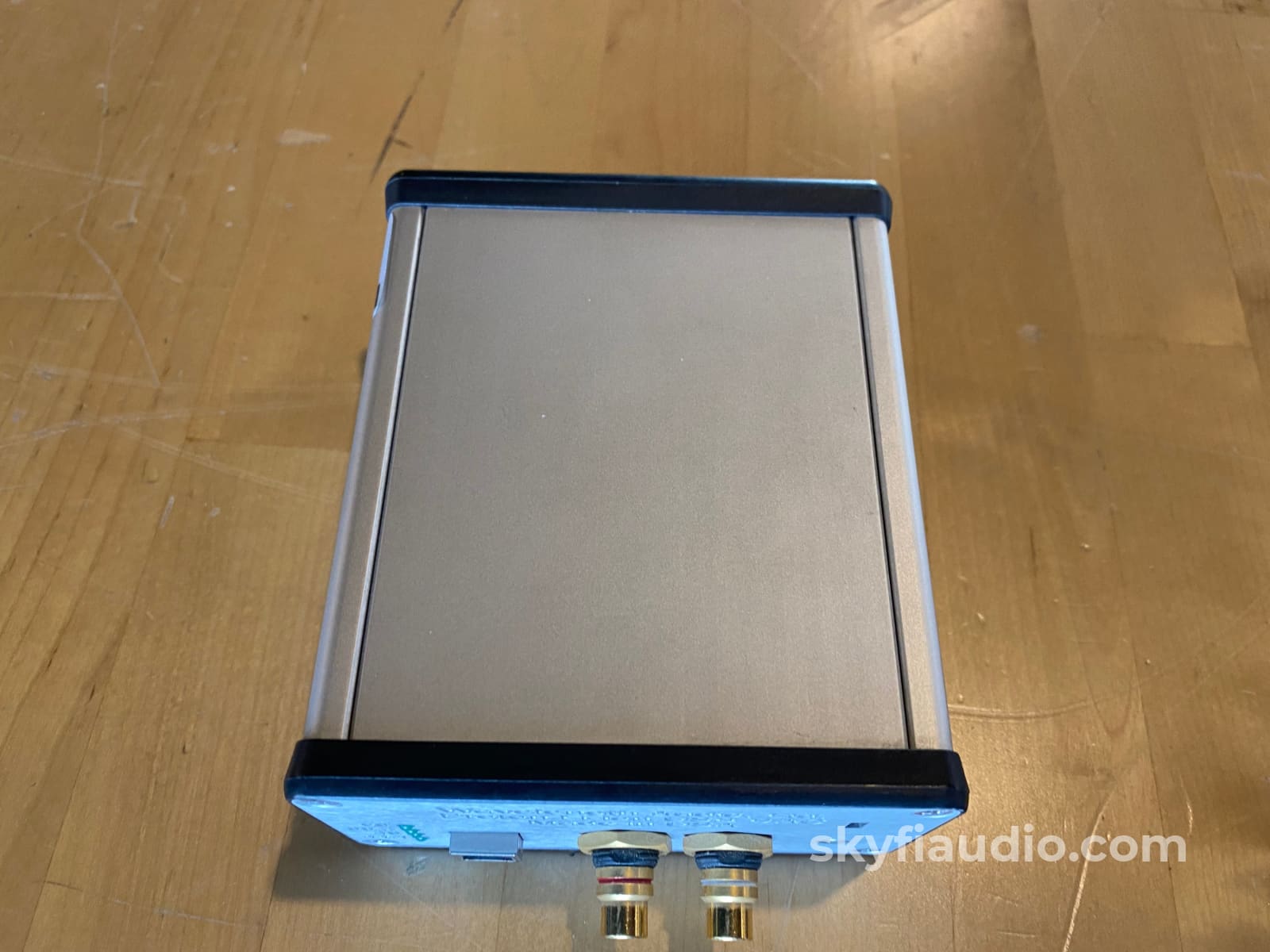
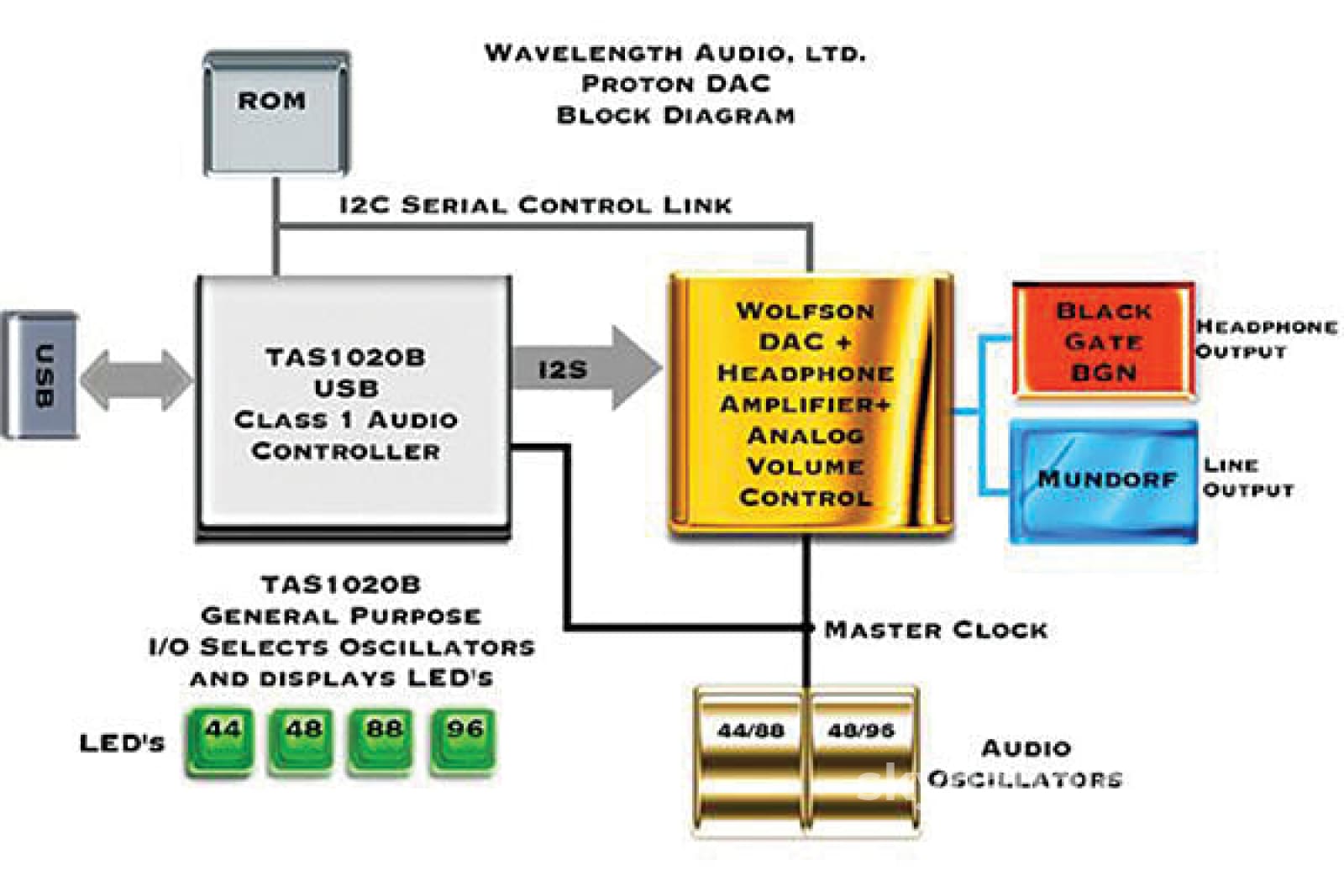
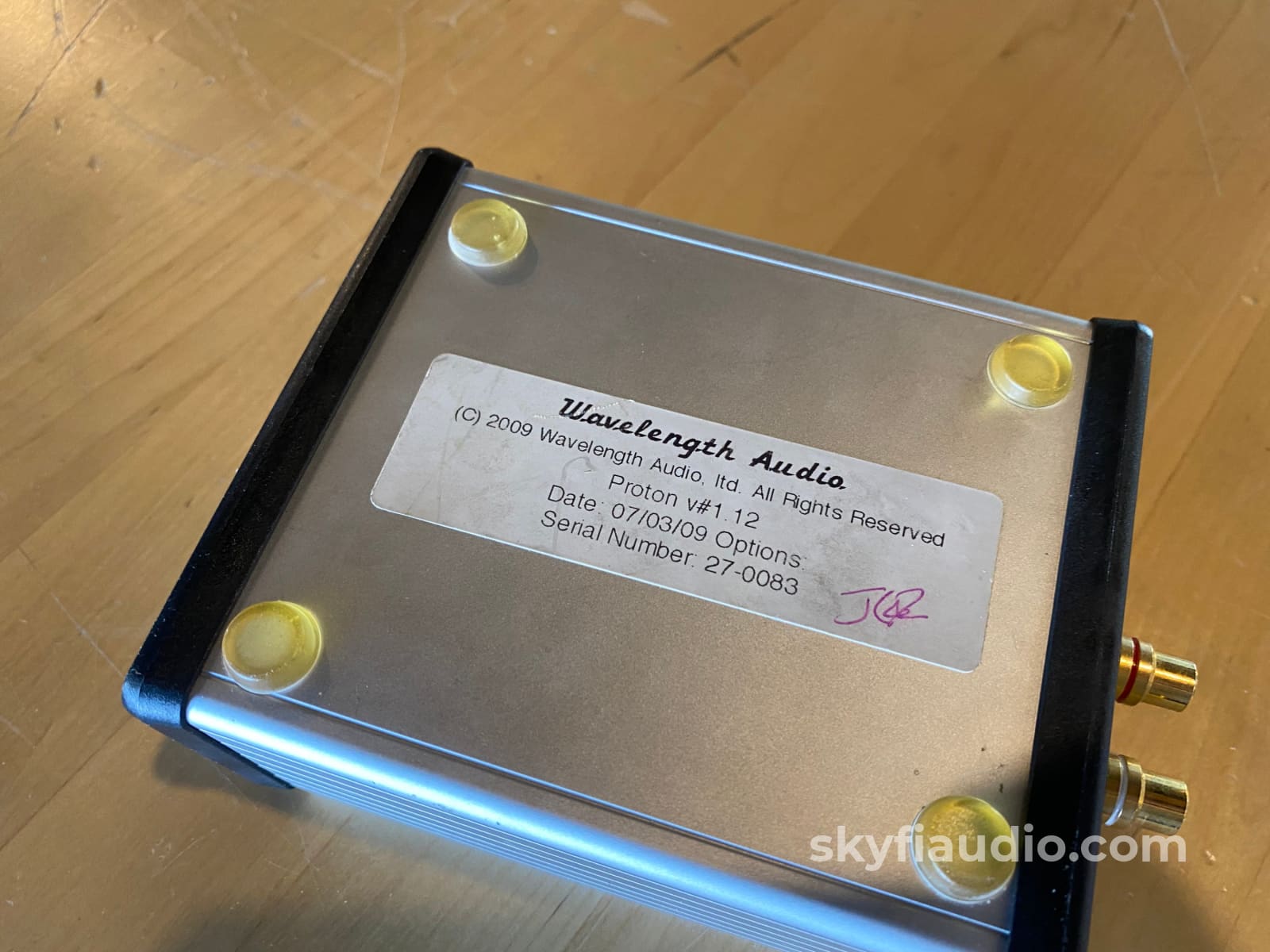
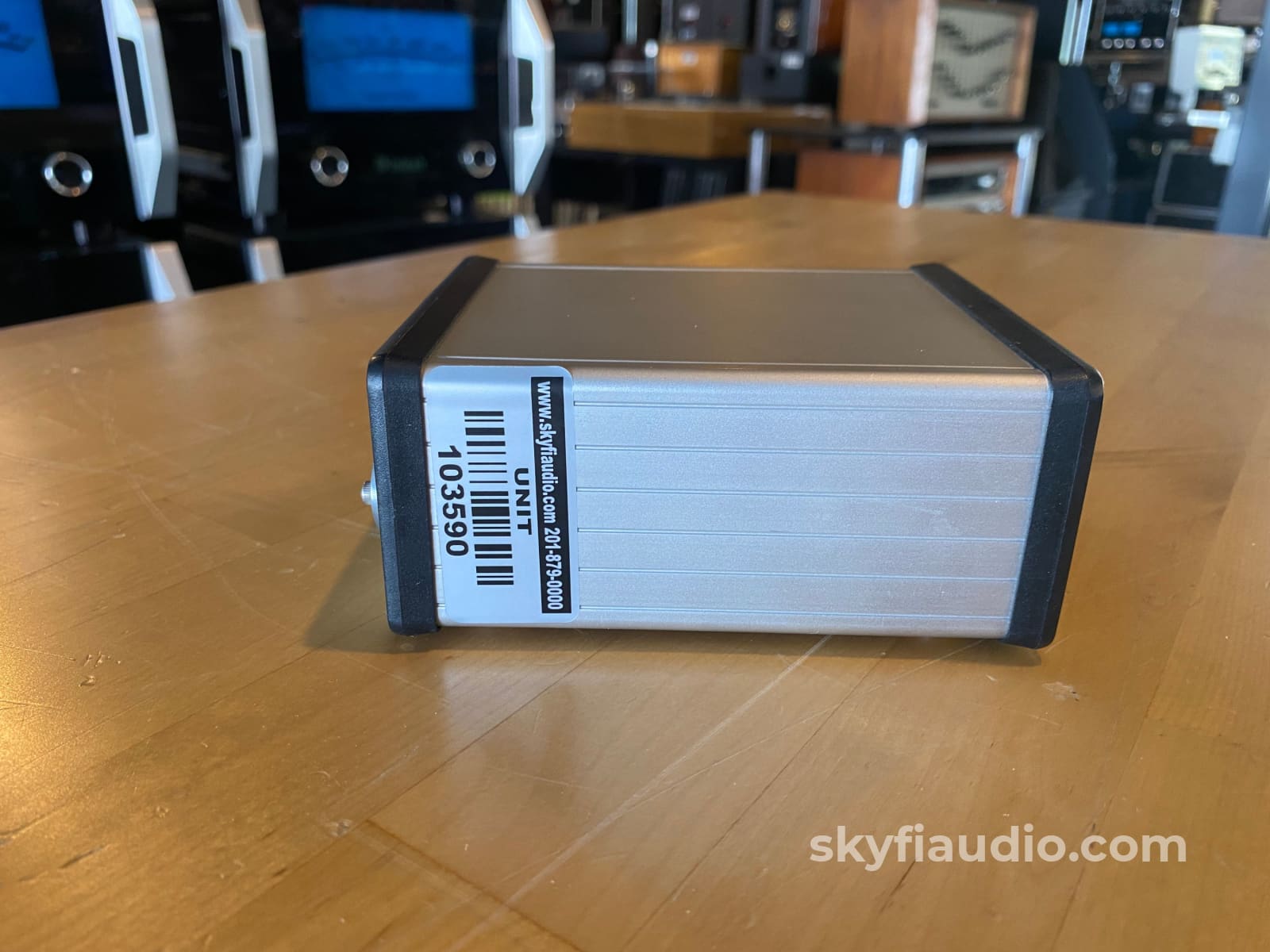
Wavelength Audio Proton Li-Ion USB DAC
Free Shipping on Most Electronics - Excludes Speakers and Items Requiring Freight - Contiguous U.S. Only
Pickup currently unavailable at SkyFi 479

Wavelength Audio Proton Li-Ion USB DAC
SkyFi 479
479 South Broad Street
Glen Rock NJ 07452
United States
We've been testing this unique DAC in our shop for the last several days to our overhead speaker system.
It is super simple to use and sounds excellent with streaming and higher resolution formats in our testing.
Click below to add our recommended matching cables from Kimber Kable, all brand new as SkyFi is an official Kimber dealer.
Ascent Series Hero Analog Interconnects (PAIR) - RCA Ultraplate or WBT Connectors
Great review from Stereophile by Art Dudley circa 2011:
Like other Wavelength Audio products, the Proton contains an almost fanciful amalgam of old and new technologies: a glorious mosaic, shrunk and made electric. Tiny surface-mount resistors and capacitors share space with old-style carbon-comp resistors and ice cube–sized Mundorf M-Caps, which in turn share space with a ROM chip, a TAS1020B USB receiver chip with embedded microprocessor, voltage regulators, and a 3.6V rechargeable lithium-ion battery. (History buffs, take note: Lithium-ion batteries were invented in nearby Binghamton, New York, which is also home to McIntosh Laboratories.) There's even a sprinkling of Åber-rare Black Gate capacitors in there—the red ones!
At the center of all this, figuratively and nearly literally, is a Wolfson XWM8721 DAC chip that also incorporates an analog volume control and a headphone amplifier. Within an inch of the Wolfson DAC are two low-jitter oscillators, which generate the signals for both sample-rate families: 22.5792MHz for 44.1 and 88.2kHz, and 24.576MHz for 48 and 96kHz. Four LEDs on the Proton's rear panel correspond with those four sampling rates: visual confirmation that you're hearing what you hope you're hearing.
In an effort to eliminate the hated wall wart—Rankin wanted his least expensive DAC to be usable while traveling, as well as at home—the Proton's basic functions are powered by the 5V that appears on the USB port, while the critical analog side of the Wolfson DAC chip is powered by the above-mentioned lithium-ion battery, which is recharged while the computer rests between tasks—or, in the case of some contemporary machines, even when the computer is powered down. Rankin estimates 25 to 30 hours of playback time per charge; when the battery dips below a certain voltage, the Proton goes into charge mode, which is indicated whenever two rear-panel LEDs of the same sample-rate family are illuminated. (When two unrelated LEDs light up—say, 44.1 and 48kHz—that indicates a hardware failure.) Interestingly, during this product's development, Rankin discovered that the precise value of its power-supply voltage regulator is sonically critical: The 3.6V regulator he initially chose let through too much computer noise. By switching to a 3.3V regulator, Rankin was able to reduce the Proton's jitter level considerably.
All of the above is built into an aluminum extrusion more or less the size of the average moving-coil step-up transformer. Internal build quality was superb, and the review sample looked very nice indeed. In particular, the Proton's rear panel, with its engraved lettering and its neat row of LEDs, had a purposeful look that complemented both my iMac rig and my hi-fi.
Given that Wavelength Audio has always been associated with handmade tube electronics, and given my fondness for all things tube, the thoroughly solid-state Proton was the one Wavelength product in which I had the least interest. That changed soon after Gordon Rankin sent me a Proton—and while what I'm about to say has become a tatty cliché in some hands, the fact remains: I bought my review sample.
The USB DAC market is wide open: fast and fun. You can do well for less, and surprisingly well for more—but in my experience, you can't do better for $900. And coming as it does from a company with such an excellent reputation for staying ahead of the technology curve, the wonderful-sounding and very high-value Wavelength Proton is an easy recommendation.
Specifications:
Single-box digital/analog converter
Digital input jack:
USB (type B plug) only
Analog output jacks:
Stereo L+R RCA
Formats supported:
All PCM-output audio codecs
(AIFF, FLAC, WAV, MP3, etc.)
Sampling rates supported:
44.1, 48, 88.2, and 96kHz
Word lengths supported:
16 and 24 bits
Maximum line-level output:
1.8V
Output impedances:
100 ohms (line)
1 ohm (headphones)
Frequency response:
5Hz – 20kHz –1.0dB
Dimensions:
4" (100mm) W
2.5" (60mm) H
5.75" (150mm) D
Manufacturer:
Wavelength Audio, Ltd.
3703 Petoskey Avenue
Cincinnati, OH 45227
The SkyFi Testing Process for DACs:
We start with a visual inspection of all internal components to make sure that there are no signs of heat stress or damage. Capacitors are checked for telltale signs of predictive failure including bulging, shrunken wrappers, or physical leakage. We also inspect resistors and other passive components for signs of overheating.
After the visual inspection we connect the DAC’s RCA outputs to our Sencore PA81 Power Analyzer which simulates a real world input impedance and allows us to monitor the output on an oscilloscope. We are equipped to test optical, coaxial, and USB inputs at Redbook CD Quality. We start with a test signal to verify signal lock and proper output on both channels. If the DAC has balanced outputs these are also tested at this time. If the DAC has multiple Optical and Coaxial inputs they are all checked for proper lock. USB inputs are tested with a Macbook Pro.
After proper function is verified, we set the DAC up for a listening test to evaluate general audio reproduction quality and monitor for clicks, pops, or any other audible signs of issues related to dropped signal lock or failing audio output stages. We often connect DACs under evaluation to our long term test rig for a long test stint to verify stability under real world operating conditions.
|
Item |
Included |
|
Original Box |
Not Included |
|
Manual |
Not Included |
|
Remote |
Not Applicable |
|
Cables |
Available Separately |
|
Physical Condition |
7 / 10 |
|
Working Condition |
10 / 10 |
Choose options










